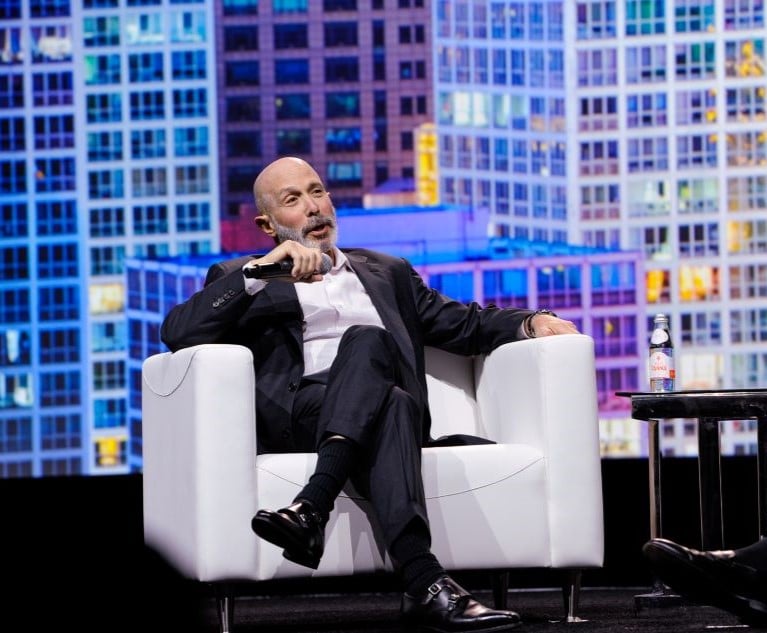A battle is shaping up over the efforts of the federal trucksafety agency to raise the minimum financial responsibilityrequirements for motor carriers, something which has not been donesince the 1980s.
|It comes as the trucking industry is also trying to stopimplementation of rules effective July 1 that place a firmer limiton the number of hours drivers can be on duty. The America TruckersAssociation has filed suit to halt the changes, and Sen. SusanCollins, R-Maine, has inserted a provision in a federaltransportation appropriations bill that would delay the changes forat least one year.
|The House voted June 10, 214-212 along party lines, to addlanguage to the Dept. of Transportation (DOT) appropriations bill,H.R. 4742, denying funding for proposed Federal Motor CarrierSafety Administration (FMCSA) rulemaking aimed at raising theminimum insurance required for interstate carriers.
|The amendment was sponsored by Rep. Steve Daines, R-Mont. Itfollowed a spirited debate on the House floor June 9 between Dainesand Rep. Matt Cartwright, D-Pa. Cartwright last year introducedlegislation, H.R.2730, the Safe and Fair Environment on HighwaysAchieved through Underwriting Levels Act of 2013, that wouldincrease the current minimum for motor carriers transportingproperty from $750,000 to $4.422 million. It also requires theSecretary of Transportation to adjust such amount annually forinflation relating to medical care.
|The June 10 vote and the upcoming proposal to raise the limitsfrom the truck agency is just the first step in what is expected tobe a longer battle pitting insurers and truckers againstplaintiff's lawyers.
|The dog they are fighting over has been sleeping since the1980s, when the minimum financial standard was set by the FMCSA aspart of an effort to deregulate oversight of transportationcompanies.
|The sleeping dog was awakened through a provision in a 2012transportation law that the FMCSA conduct a study examining minimuminsurance requirements for motor carriers and report back toCongress.
|The FMCSA said in its report, releasedin April, that while catastrophic motor-carrier crashesare rare, the costs for resulting severe and critical injuries canfar exceed current minimum liability requirements.
|“In conclusion, FMCSA has determined that the current financialresponsibility minimums are inadequate to fully cover the costs ofsome crashes in light of increased medical costs and revised valueof statistical life estimates,” the report says.
|Following the June 10 vote, Burton LeBlanc, president of theAmerican Association for Justice, which represents plaintifflawyers, said the mandate has remained unchanged since the 1980sdespite truck crashes often costing over $4.3 million percrash.
|“Injured motorists, taxpayers, and health insurers are left topay the difference,” LeBlanc says.
|“Raising minimum insurance requirements— and adjusting them forination in the future—would restore a key economic incentive tomotivate the truck and bus industry to focus on improving safety,”he added.
|Daines said on the House floor that FMCSA's plan for higherliability coverage will be proposed despite the fact that theDepartment of Transportation has determined that less than 0.2% oftruck-involved accidents have property and injury damages thatexceed the current minimum liability coverage requirements.
|Daines argued, “Current proposals regarding the insuranceincrease call for minimum levels to go up by more than 500%, andthis would lead to a significant reduction in insuranceavailability for motor carriers, especially small businesses. Thebottom line is this: the trial lawyers win, the small businesseslose.”
|Daines contended premiums could increase by more than four timesthe current levels, up to $20,000 per truck, and that more than 40%of currently operating motor carriers could go out of business dueto these new requirements.
|“There is no evidence supporting higher insurance requirementsthat would result in improved safety,” Daines said. “Increasingminimum insurance levels is not the best way to meet the needs ofcatastrophic accident victims.”
|Cartwright called the Daines amendment “a threat to the safetyof Americans on the roadway,” and “counter to the goal we all shareto protecting and preserving Social Security and Medicare, twovital safety-net programs in this country.”
|Above all, Cartwright said, “it destroys accountability in thesafety rules in the trucking industry.”
|Insurance-industry groups declined comment. David Golden, seniordirector of commercial lines for the Property Casualty InsurersAssociation of America, said PCI would withhold comment until therule is actually proposed by FMCSA.
|An industry executive with knowledge of the transportationindustry recently spoke to PC360 (see related story) about theimpact the FMCSA proposal would have on motor carriers ofpassengers, which was also examined in the April report. Raisingthe minimum limits—currently $5 million for 16 or more passengersand $1.5 million for 15 or fewer passengers—would result in higherrates, but over time, perhaps three or four years as claimsdevelop, he said.
|The executive highlighted the potential impact of “limits pull,”where settlement values are inherently pulled up as availablelimits increase.
|Steve Weisbart, chief economist at the Insurance InformationInstitute, said a potential factor that could combat the risingcost of claims is the possibility that higher premiums will“provoke a little more interest on the part of motor carriers toidentify issues that lead to accidents.”
Want to continue reading?
Become a Free PropertyCasualty360 Digital Reader
Your access to unlimited PropertyCasualty360 content isn’t changing.
Once you are an ALM digital member, you’ll receive:
- All PropertyCasualty360.com news coverage, best practices, and in-depth analysis.
- Educational webcasts, resources from industry leaders, and informative newsletters.
- Other award-winning websites including BenefitsPRO.com and ThinkAdvisor.com.
Already have an account? Sign In
© 2024 ALM Global, LLC, All Rights Reserved. Request academic re-use from www.copyright.com. All other uses, submit a request to [email protected]. For more information visit Asset & Logo Licensing.








